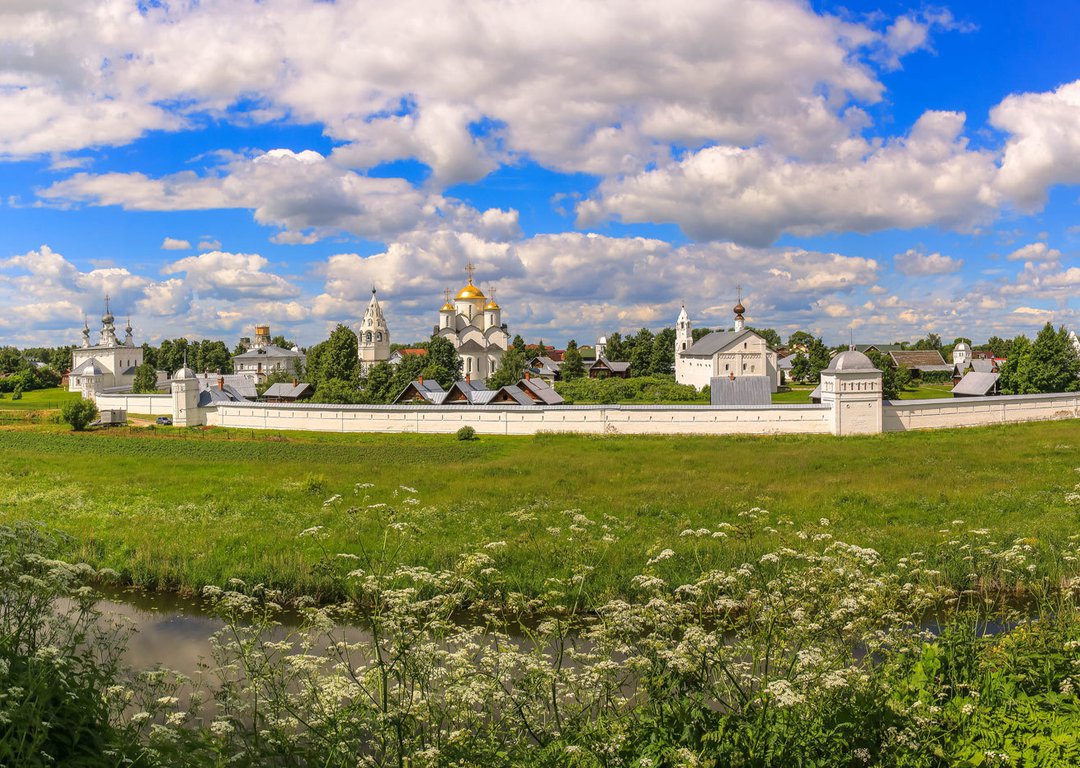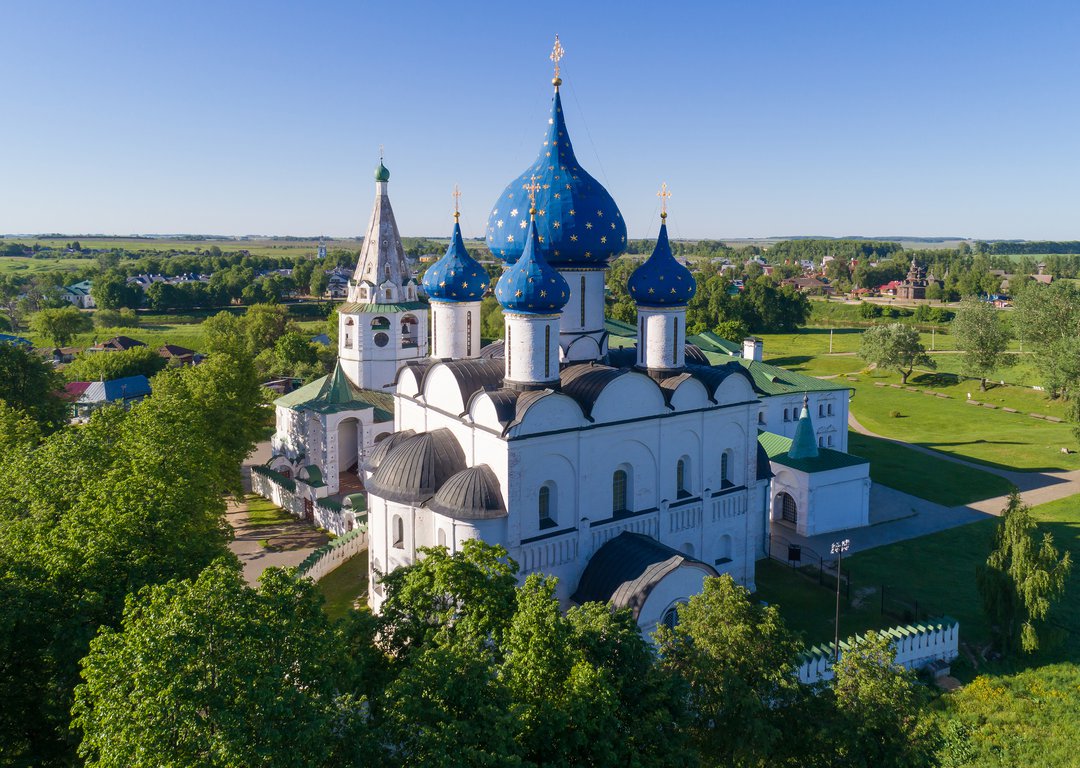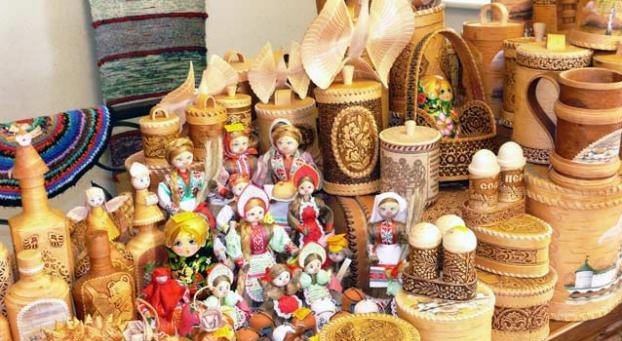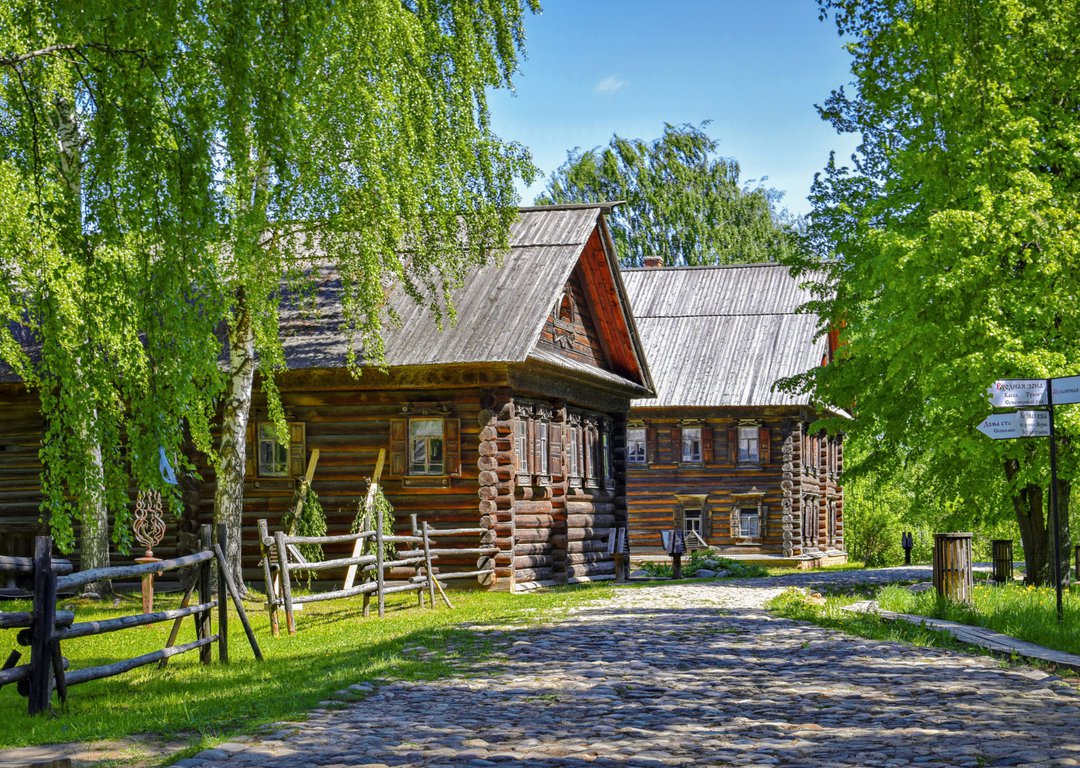 SUZDAL
SUZDALDurante el recorrido, verá el brillante complejo arquitectónico del Suzdal Kremlin y su gema, la hermosa Cámara de Cristo, que explorará el conjunto del Monasterio de San Eutimio. Y, por supuesto, probaremos "medovukha", el famoso refresco ruso a base de miel. Suzdal produce el mejor!
 SUZDAL
SUZDALSe dice que Suzdal es el reflejo del alma rusa. Es una de las ciudades antiguas rusas pequeñas más bellas.
 SUZDAL
SUZDALTambién visitamos el famoso Museo de Arquitectura de Madera. Aquí puedes ver la antigua Rusia y aprender sobre el estilo de vida rural tradicional. Continuar hasta la ciudad de Kostroma (190 km).
 The Museum of Flax and Birch Bark, Kostroma
The Museum of Flax and Birch Bark, KostromaIf time permits, the Museum of Flax and Birch Bark in Kostroma is a fascinating and unique stop. This museum is dedicated to two quintessentially Russian materials: flax and birch bark. These natural resources have been integral to Russian daily life and craftsmanship for centuries, and the museum showcases their historical significance. Visitors will also have the opportunity to see and purchase birch bark crafts, which are a classic part of Russian folk art. These can range from practical items like baskets and shoes to decorative pieces and souvenirs. The museum is now home to a remarkable assortment of wooden buildings, ranging from traditional peasant houses to religious structures, such as churches and bell towers, each representing different periods of Russian history and architectural styles. These structures are not only visually stunning but also offer a glimpse into the everyday life and craftsmanship of rural Russia, preserved for future generations. The museum’s collection provides a rare opportunity to explore the beauty and ingenuity of wooden architecture, which was once so prevalent in Russian villages but has since been lost or endangered.
 Kostroma Wooden Architecture open air museum
Kostroma Wooden Architecture open air museumThe Museum of Wooden Architecture in Kostroma is a fascinating testament to Russia's rich architectural heritage. Established to preserve the region's historical wooden structures, it was founded in response to the impending flooding caused by the construction of the Gorky Hydroelectric Station and dam on the Volga River. Many villages, home to unique and valuable architectural monuments, faced the threat of submersion. In the 1950s, expeditions organized by the Soviet Academy of Sciences identified and salvaged the most important buildings, transporting them to the museum's open-air collection in Kostroma Sloboda. The museum is now home to a remarkable assortment of wooden buildings, ranging from traditional peasant houses to religious structures, such as churches and bell towers, each representing different periods of Russian history and architectural styles. These structures are not only visually stunning but also offer a glimpse into the everyday life and craftsmanship of rural Russia, preserved for future generations. The museum’s collection provides a rare opportunity to explore the beauty and ingenuity of wooden architecture, which was once so prevalent in Russian villages but has since been lost or endangered.